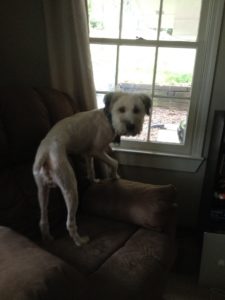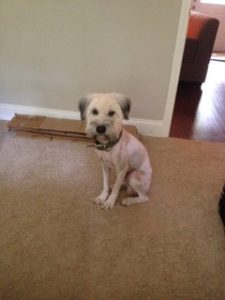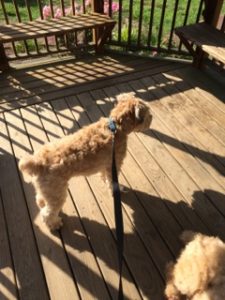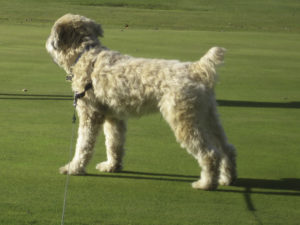In working and playing with dogs, I enjoy discussing our pets with other dog owners. A question that I hear again and again is, “how do I know what my dog’s ideal weight should be?” It’s a question I’ve had, myself. Our second dog Chipper was adopted — truly rescued — as as an energetic but devastatingly malnourished puppy.


While being malnourished is terrible, being overweight is also dangerous and detrimental to health. Unfortunately, these days many dogs are overweight. When you look at the high quantity of grains in kibble, you might start to understand why so many dogs have this health issue. Mass market processed feed containing non-nutritional ingredients is an unfortunate reality. It is always disheartening to hear some well-meaning pet owner vouching for their latest kibble experiment as being recommended to heal their dog’s health issues. When your dog is overweight, there are really two things to look at: poor diet and lack of exercise. With a species-appropriate raw diet (such as the prey model for dogs and cats), the animal’s health will improve. Even though more and more people switch their dogs to raw, the majority of dogs are still fed kibble. With kibble, feeding less than what is directed on the package is not a good solution. Kibble is formulated with synthetic nutrients, and feeding less than what is recommended will provide less of the nutrients your dog needs.
When you switch your dog to raw, you will notice your dog slimming down in the first few weeks. Your dog’s energy may increase, and soon your dog will look healthier. You will see your dog’s body getting toned. When feeding a raw diet, you are feeding what dogs are intended to eat: meat, bones, and organ. You will see your dog’s body catching on and start to look better.
Once you start noticing changes in the dog’s body shape, monitor the dog’s weight changes. Watch out for:
- Excessive weight loss. Make sure you are feeding your dog enough. 2-3% of the dog’s breed’s ideal body weight is a general guideline (note, at this point, ideal weight is likely not the same as the dog’s current weight). If your dog is underweight, increasing fat content may be beneficial. Remember that every dog is an individual and unique being. Dogs need different amounts of food depending on their metabolism, their amount of exercise and specific nutritional needs such as nutrient deficiencies. Keep in mind though that we are accustomed to seeing slightly overweight dogs, due to the mass-market penetration of kibble (and often lack of [owner] exercise).
- Run your hands over your dog’s rib cage. If you can feel the ribs covered by a thin layer of flesh, it is a good sign. You should not be able to actually see your dog’s ribs. You used to be able to see our rescue’s ribs, even with a full coat of hair! It is, however, normal to be able to see a healthy dog’s lower ribs when exercising or panting.
- Look at and feel your dog’s lower back. You should not notice hip bones protruding.
- When looking at your dog from the side, you should see the tummy tucked in.


- Gaining weight. You might find that your dog’s scale weight is increasing while your dog is visually slimming down. This is also normal: muscles weight more than fat. If you notice excessive weight gain, or are concerned, follow the guidelines above to make sure that you are not overfeeding.
Keep in mind that frequent exercise is important for building muscle mass. The good thing is, dogs LOVE to exercise and on a raw diet they have the energy they need to do so.

